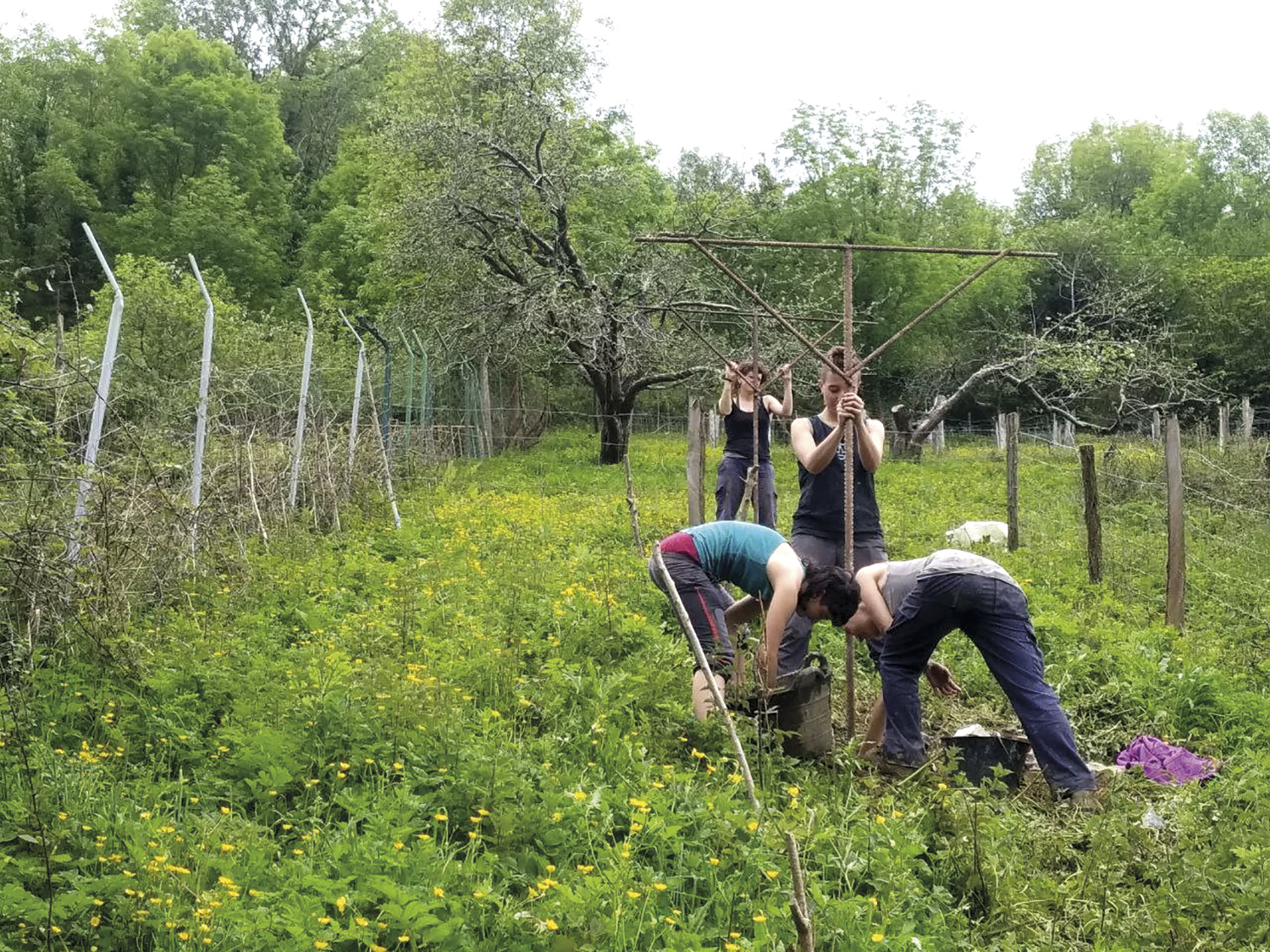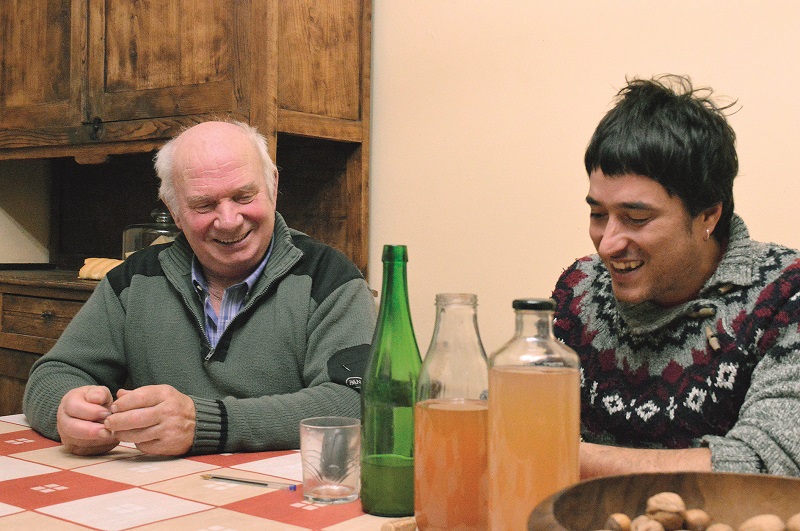When cider and beer hops are mixed...
- The mixture of hops and cider used to brew beer is special. Taste, freshness and identity are said to be three. It is very successful in the United States and Canada, and in Galicia they have also taken native apple and with outside hops. In the Basque Country, however, cider with hops is a strange drink. At the moment.

However unknown, we cannot say that cider and hops have never been mixed. In the 1950s, Antonino Pagola of the farmhouse Orkolaga de Hernani mixed the apple and hops to make this refreshing drink. But Antonino departed, and at the same time departed with him, with his secret recipe. The current beer and cider producers have reason to get to work together and turn this old beverage into a new beverage, as the lumpy cider has its niche in the long history of our cider. If not, ask the old barril of Orkolaga...
The relatives of Antonino Pagola have a pity: that her grandfather has brought her with the same recipe, without teaching anyone. Indeed, the drink of my grandfather Antonino was unique: “It was very refreshing and very foam. It had the barrel in the shade in the chabola next to the house, and there was the cider and that beverage made with hops.”
In January 2017 I wrote the Hops for Beer in the Basque Country for ARGIA: Past or future? It all started while conducting interviews for the report. I made an appointment with the grandson of Antonino Pagola, also Antonino. Before I started the conversation, he made it clear to me: “If you come to look for the recipe, I take your grandfather with him.” But he immediately realized that I had no news of that famous recipe. He explained everything to me: “Our grandfather Antonino had orchards in the Orkolaga farmhouse and in summer, when the heat was intense, he brought that drink, cider and the drink made with hops. It was only for those who worked in the garden and for those who worked in the house. I was ready for the summer, and to serve cider, I took a jar, I went to the cottage next to the farm, and I took it directly from the kupela. In our house you always said that the drink was very special, very refreshing and very foamy. It was best for thirst.”
Many of the questions that emerged from that interview have been answered after the investigation; others, however, have been questioned. That is precisely what gives Antonino's drink its point of mystery.
FACILITIES FOR OBTAINING HOPS FLOWER
Two basic ingredients for the manufacture of hops are, of course, the apple and the hop flower. In the Basque Country, and more specifically in the town where Antonino lived, in Hernani, the apple harvesting was not difficult in the 1950s; many cottages made their cider. But hops? Where did Antonino get from?
Hop plantations have under no circumstances had the importance of chamomile within the Basque landscape. But there have been plantations. In 1944, the Second Spanish Civil War began in 1944. Because of the World War, no hops were coming from Germany, and the main breweries in the Basque Country could not produce this non-hops drink. Thus, using the aid of the Government of Spain, several baserritarras, 225 baserritarras in 1949, were encouraged to plant hops between 1945 and 1965. However, the management and advice of these hop plantations required adequate people, and in Gipuzkoa, Antonino Pagola – together with Vicente Ruigómez– assumed this responsibility.

Source: REVISTA AGRICULTURA.
Photo: Vicente Ruigómez
As if it were not enough, Antonio Pagola also owned a hop plantation on the banks of the Urumea River. By 1945, it had over 100 hop plants on its land. “My grandfather was in the car on the road between Hernani and Ergobi transporting hops, and sometimes he took me with him,” his grandson told us. In fact, most of the bags filled with hop flowers collected in Gipuzkoa reached him: he was the manager of the hop drying plant of Ergobin, in Astigarraga, and therefore expert in hops. If someone had the opportunity and the knowledge to make a lupulose cider in the Basque Country, that was Antonino.
Therefore, Antonino had no problem getting hops, both fresh and dry. The hops collected were sold to the brewery Juan and Teodoro Kutz, located in the Old Town of San Sebastian, and also travelled to León at the expense of the hops. Another thing is where he got the idea of mixing it with cider. And also how I drank the beverage.
THE SECRET IS – THERE – ON PRESCRIPTION
“At home we know that the drink was made with cider and hops, but we don’t know how to do it,” his family tells us. In the United States and Canada they use the technique of dry hopping to make the hopped cider, which they call hopped cider. A female hop flower – when it is dried – would be added to the cider, in this case after having been fermented or fermented. The truth is that, with the resources and ingredients of Antonino, the way to make the lumpy cider should be as simple as possible. But how?
Antonino's knowledge and experience regarding plants and orchards allowed him to perform this small experiment with cider and to have a lumpy cider at home every year. He had an autochthonous hops, planted by himself, and a cider made of apples from his chamomile. And this is where we are now, in 2018, looking outside Euskal Herria, to bring hops and look for new products for Basque ciders and brewers, in the most natural way possible, with the aim of making innovative beverages with the largest number of local products. And where to find the answer, we found it in an old barrel from Hernani. Ah, if Antonino raised his head...!
Txotx denboraldian eredu ekologikoan ekoiztutako Euskal Sagardoaren eskaintza izango da hainbat sagardotegitan, eta hura bistaratzeko, Jatorri Deiturak eta ENEEK-Ekolurrak kupeletan paratzeko euskarria aurkeztu dute.

























